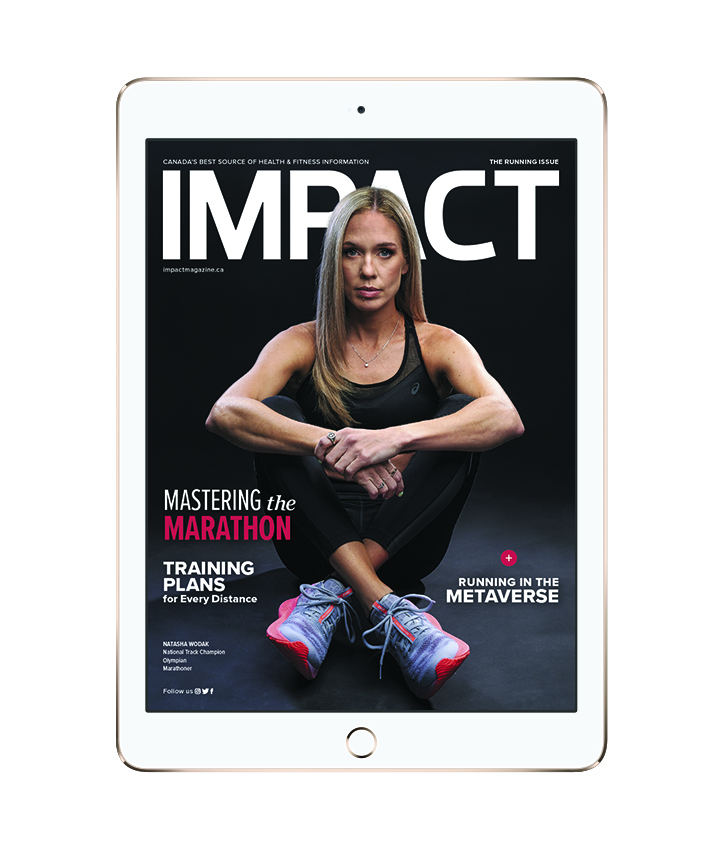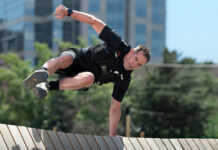During the darkest of days, Aristotle Domingo paid attention to his wardrobe. Fashion choice, however, had little to do with trends.
His priority was to wear clothes that effectively covered up any sign of his affliction. Even through the summer months, he would pull on long pants to ensure his leg braces weren’t visible. And full sleeves were the answer to keeping his scarred arms out of sight.
“I was ashamed,” Domingo says now. “You’re in your 20s, you’re supposed to be in the prime of your life, you’re supposed to be having the best time. And here you are with a disability, with scars to hide so people don’t judge you.”
“Who’s going to want this person? Who’s going to accept you in the world?”
Dressing defensively was only part of his grim routine during what he describes as “15 years of lull.” A bout of sepsis—a body-wracking infection that produced an excruciatingly painful aftermath—had forced him into a monotonous existence. “Waking up and dreading the day, going to work with a foggy head because of medications, coming home, not wanting to do anything because I just want to take my leg braces off, then going to bed and waking up and doing the exact same thing the very next day.”
All of which is a far cry from Domingo’s life now. His fortunes changed course, resulting in a startling transformation. These days, it’s hard to imagine a more dynamic person than Domingo.
A double amputee since 2019, he runs and golfs and cycles. He plays, and introduces others to, wheelchair basketball and sitting volleyball. He excels at para-throwing events such as discus, shot put, javelin. He founded the Amputee Coalition of Toronto, a peer-support group encouraging active lifestyles. He hosts a weekly podcast, The AmpuTO Show. In 2020, he was named the ParaSport Ontario Ambassador of the Year.
The 46-year-old’s growing list of acting credits includes an appearance on the television show The Handmaid’s Tale. And Domingo is literally the poster boy for the Scarborough Health Network Foundation—everywhere are life-size photos of the man promoting healthcare. A fitting association given that Centenary Hospital was the setting for two of his plot twists.
That is where he had been rushed in 2001 after collapsing in the hallway of the family home. Sepsis nearly killed Domingo, then 25, putting him in a coma for three months, in a hospital bed for more than a year, in leg braces for what would feel like forever.
The Scarborough hospital is also where he initiated his dramatic about-face. In 2016, tired of the endless complications, broken by the bottomless agony, he told medical staff he was eager to explore the last resort—amputation.
The standard warning was issued: “You can’t grow it back. Once we cut it off, that’s it.” Domingo did not care. His left leg, below the knee, was amputated in January 2017. Post-operation, he looked down and felt relief. “It was like getting rid of a ball and chain. Amputation freed me from my disability.” He remembers thinking: “This is a definite, tangible new chapter. What do you want to do now? This whole new world just opened up.”
Despite a modest goal initially, “walking two blocks without crying,” he decided to celebrate his freedom from pain by entering a road race. While still in hospital, he signed up for a local five-kilometre race, which alarmed his healthcare team. But Domingo dug in. ”It was a selfish thing,” he says. ”I just wanted to run this one race to prove to myself that I can do it. I don’t care if I walk it, if I jog it, if I run it.”
Five months after amputation, he joined thousands of runners in the start zone. He finished. Two years later, he underwent the procedure on his right side and six months after surgery, he completed another five-kilometre race.
The sense of accomplishment is always overwhelming. ”Like, ‘Wow, I want some more. What else can I do?’”
In addition to ongoing devotion to the limb-loss community, Domingo continues to run. Three times weekly, minimum. “My form of meditation,” he says. “I’m troubleshooting my life. It’s when I get into my Zen mode.”
All these years later, fashion remains a serious consideration, but there has been a telling evolution in wardrobe choice. Domingo wears shorts daily. That way, everyone can get a load of his matching prostheses. “It’s to show pride in what you’ve accomplished as an amputee, ‘Look at me, I’m walking. I’m doing the things I love.’”
Sleeves are short, too. During a Zoom chat the other day, he raised his arms to the laptop camera to offer a better look at his sepsis scars. Then he tugged down the collar of his T-shirt—emblazoned with the slogan: “Life Without Limitations”—to reveal the hole in his neck where he’d had a tracheostomy.
While Domingo prefers to look forward, there is no denying the remarkable journey on display. From coma patient—his family had been given the option of pulling the plug—to inspirational role model to, well, who knows what.
“For me now, it’s, ‘What adventure can we go on next?’”
Photography by Emma E. Arsenault

Read This Story in Our 2022 Running Digital Edition
2022 RACE SOURCE GUIDE. Training plans for every distance, yoga for runners, athletes with impact, running in the metaverse, recipes and much more!

















